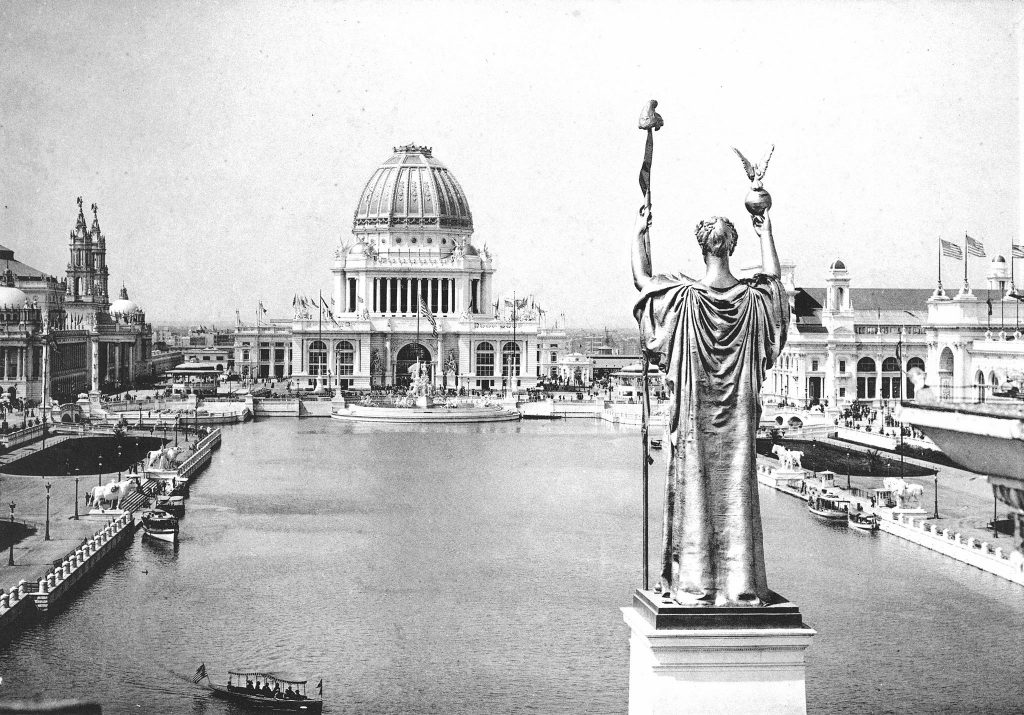I’m reading Erik Larson’s fascinating book Devil in the White City, which is about the 1893 World’s Fair in Chicago. A lot of things came out of that fair or were inspired by it, including the ubiquitous ‘Snake Charmer Song’, the Ferris wheel, a notorious serial killer (sic), and several other brand names that have effectively become generic through their popularity — such as Juicy Fruit, Shredded Wheat, and Crackerjack — among other inventions and ideas. And then there was a word that had already been born a century earlier, but which had recently changed its meaning and then began to blossom in the very photogenic landscapes, buildings and attractions of the Columbian Exposition …
Here’s a passage from Larson’s book that explains how a century-old word changed its meaning substantially with the introduction of a relatively new invention that became extremely popular at the fair:
“A second contractor received the exclusive right to rent Kodaks to fair visitors, the Kodak being a new kind of portable camera that eliminated the need for lens and shutter adjustments. In honor of the fair Kodak called the folding version of its popular No. 4 box camera the Columbus. The photographs these new cameras created were fast becoming known as “snap-shots,” a term originally used by English hunters to describe a quick shot with a gun.” Little did they realize then that about 120 years on, a special kind of snapshot — of one’s own face — would become so important …
The Online Etymology Dictionary is a little inconsistent about when the photographic meaning of shapshot (also spelled snap-shot) first came into use. Its entry for snapshot/snap-shot dates its original meaning — “a quick shot with a gun, without aim, at a fast-moving target” — to 1808, but notes that the “photographic sense is attested from 1890.” (And “figuratively, of something captured at a moment in time, from 1897.”) However, under the entry for snap, the dictionary states that “meaning a snap-shot” it’s from 1894. It does appear from Larson’s book that the Exposition’s visitors were already enjoying taking snapshots with their newfangled box cameras, so the earlier date is probably more accurate.
For a deeper dive into the history of the snapshot and how it changed the way we view the world, read Clive Thompson’s 2014 article in The Smithsonian.
***

